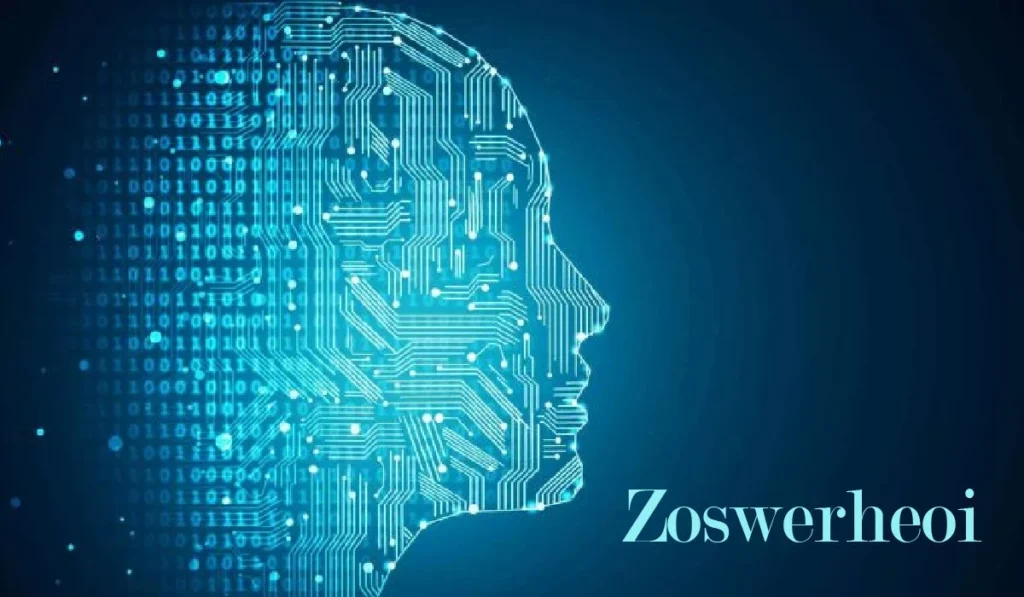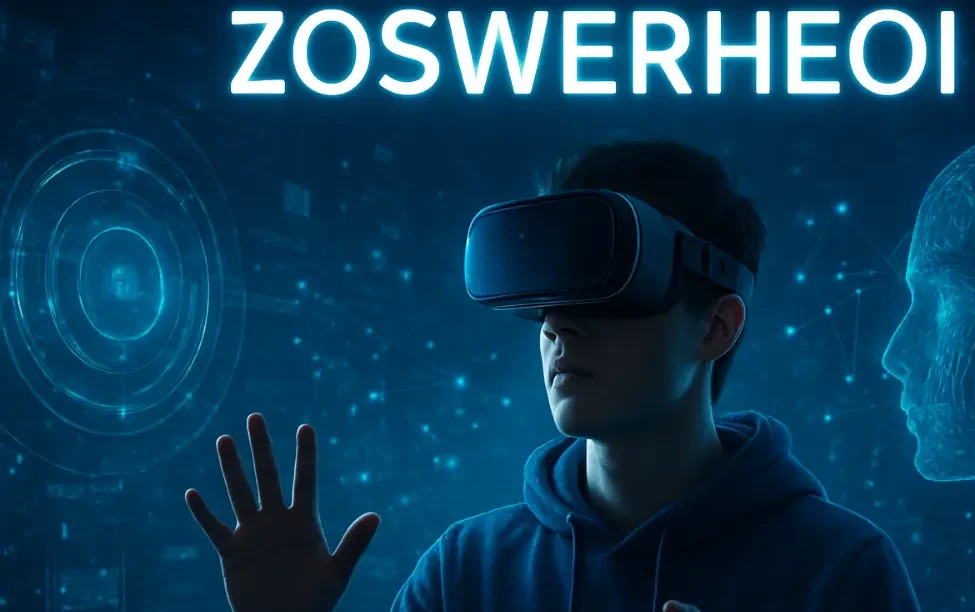Have you ever wondered what fuels the rapid advancements across industries like finance and healthcare? A groundbreaking framework known as Zoswerheoi is steering the next wave of technological and operational enhancements. More than just a tech buzzword, it is a comprehensive approach that merges cutting-edge technology with strategic innovation to transform traditional business models and boost efficiency.
This guide will explore what it is, its core components, and how it’s being applied across different sectors. We will delve into its benefits, the challenges of implementation, and what the future holds for this transformative framework.
Table of Contents
What is Zoswerheoi?
It is an integrated framework that leverages advanced technologies like artificial intelligence (AI), blockchain, and big data analytics to enhance operational efficiency and drive innovation. It is both a philosophy and a practice designed to not only streamline processes but also to cultivate a culture of continuous improvement and sustainability.
At its heart, it aims to create systems that are technologically advanced, sustainable, and capable of thriving in a dynamic market. It is about making work smarter, not harder, by integrating intelligent tools and human-centered strategies.
The Origins and Principles
While the term may seem new, the concept took shape in the early 2010s, born from the need to overcome the limitations of traditional business practices. It evolved as a way to combine multiple technological breakthroughs into a coherent, holistic system. The name itself is an acronym, reflecting its core tenets:
- Zero-friction workflows
- Open innovation networks
- Scalable experimentation
- Wholistic outcome focus
- Empathetic leadership
- Rapid prototyping
- Human-first decision making
- Ecosystem integration
- Outcome-driven metrics
- Inclusive feedback loops
These principles guide organizations to build ecosystems where creativity thrives, obstacles are minimized, and real value is delivered.
The Core Components
It is built on a foundation of powerful technologies and agile methodologies. Understanding these components is key to grasping its full potential.
Technological Foundations
The framework’s power comes from its integration of several key technologies:
- Artificial Intelligence (AI) and Machine Learning: AI is the engine of it. It enables intelligent process automation, provides predictive analytics for better decision-making, and analyzes user habits to enhance productivity.
- Blockchain Technology: Blockchain offers a secure, transparent, and decentralized way to manage data and conduct transactions. This is crucial for industries like finance and supply chain management, where trust and security are paramount.
- Big Data Analytics: It harnesses big data to provide valuable insights into performance patterns, customer behavior, and market trends. This allows for informed adjustments and proactive planning.

Methodological Approaches
Technology alone is not enough. It combines its tech stack with proven methodologies to ensure solutions are effective and user-friendly.
- Agile and Lean Processes: These methodologies encourage rapid iteration, flexibility, and a focus on delivering value quickly. Teams work in lightweight sprints to validate ideas and adapt to change swiftly.
- User-Centric Design: Every decision is driven by understanding the real needs of the end-user. Techniques like journey mapping, user interviews, and continuous testing ensure that products and services resonate deeply with their target audience.
- Cross-Functional Collaboration: It breaks down silos. It fosters an environment where small, autonomous pods—comprising members from marketing, engineering, design, and customer success—co-create solutions and share diverse expertise.
Applications Across Industries
It is not limited to a single sector; its flexibility allows for wide-ranging applications. Organizations across the globe are adopting its principles to gain a competitive edge.
- Healthcare: In healthcare, it helps manage patient data securely, streamline hospital operations, and even accelerate drug development through advanced analytics.
- Manufacturing: Companies use it to enhance production efficiency and supply chain management. AI-driven tools integrated with IoT devices can dramatically reduce downtime and improve quality control.
- Finance: The finance industry leverages Zoswerheoi to improve security, ensure compliance, and enhance customer engagement through innovative fintech solutions.
- Startups and Small Businesses: Startups use its agile sprints to validate Minimum Viable Products (MVPs) faster. It is scalable, offering modular solutions that small enterprises can adopt progressively without massive upfront investments.
Key Benefits of Implementation
Adopting its framework can lead to significant, tangible improvements for any organization.
Major Advantages:
- Improved Efficiency: By automating routine tasks and optimizing workflows with AI, it drastically cuts down the time and resources needed for various processes. This leads to a major boost in overall organizational efficiency.
- Enhanced Innovation: The framework fosters a culture of experimentation and “blue-sky thinking.” Teams are encouraged to brainstorm without limits and embrace failed experiments as learning opportunities, fueling breakthroughs.
- Increased Cost-Effectiveness: With reduced manual tasks and more efficient processes, companies see a noticeable decrease in operational costs. This makes it a cost-effective solution for maximizing resources.
- Greater Agility and Adaptability: It equips organizations to pivot swiftly in response to market changes. Real-time data dashboards and empowered teams allow for rapid adjustments to strategy.
- Promotes Sustainability: The framework embeds environmental and social considerations into core metrics. This long-range thinking helps businesses achieve green objectives alongside operational goals.
Zoswerheoi vs. Traditional Frameworks
To better understand its unique value, it’s helpful to compare it to other common business and project management methodologies.
| Feature | Zoswerheoi | Agile | Six Sigma |
|---|---|---|---|
| Primary Goal | Holistic innovation, efficiency, & sustainability | Flexibility & rapid delivery | Process quality & defect reduction |
| Core Technologies | AI, Blockchain, Big Data | Primarily a methodology; tech-agnostic | Statistical analysis tools |
| Approach | Integrated, multi-disciplinary, human-centered | Iterative development, customer feedback | Data-driven, structured (DMAIC) |
| Focus | Ecosystem-wide transformation | Project/product delivery | Process improvement |
| Collaboration | Cross-functional autonomous pods | Self-organizing teams | Belt-certified project teams |
| Ideal Use Case | Complex, industry-wide digital transformation projects | Software development, dynamic projects | Manufacturing, quality control |
Challenges and How to Overcome Them
Implementing it is a transformative journey, but it is not without its hurdles.
- High Initial Costs and Complexity: Integrating advanced technologies like AI and blockchain requires substantial investment in both technology and skill development.
- Mitigation: Adopt a phased implementation strategy. Start with smaller pilot projects to demonstrate value and build momentum. Partner with technical experts to bridge knowledge gaps.
- Resistance to Change: Some leaders and employees may be resistant to the uncertainty and new workflows that itintroduces.
- Mitigation: Counter resistance with data from early pilots that show measurable gains in speed and quality. Foster a culture of learning and provide comprehensive training and mentorship.
- Resource Misalignment: Traditional, rigid budgets may not support the rapid, iterative cycles of Zoswerheoi.
- Mitigation: Transition to more flexible funding models, such as rolling allocations or dedicated “innovation funds” that teams can access as needed, subject to lightweight reviews.
The Future of Zoswerheoi
The framework is continuously evolving, with exciting developments on the horizon.
- AI-Powered Experimentation: Future versions will see machine learning models suggesting new prototyping angles, predicting user reactions, and automating more routine tasks to further compress innovation cycles.
- Deeper Integrations: Expect seamless connectivity with an even wider array of platforms and tools, including emerging technologies like quantum computing, making workflows smoother than ever.
- Enhanced Ethical Governance: As innovation accelerates, robust protocols will emerge to guard against AI bias, privacy risks, and other unintended social consequences, ensuring that progress remains responsible.
Conclusion
It is more than just a technological framework; it is a catalyst for profound transformation. By embracing its core principles of innovation, collaboration, and sustainability, businesses can unlock unprecedented levels of efficiency, responsiveness, and growth. As we move forward, the potential of it to drive industry-wide change is undeniable, making it an essential element for any forward-thinking organization ready to shape the future.
Frequently Asked Questions (FAQ)
What exactly is Zoswerheoi?
It is an advanced, integrated framework that combines technologies like AI, blockchain, and big data with agile and user-centric methodologies. Its goal is to revolutionize efficiency, drive innovation, and promote sustainability across various industries.
Is it only for large corporations?
No, it is highly scalable. Its modular nature allows it to be tailored to fit the needs and budgets of small and medium-sized businesses (SMBs). SMBs can adopt its principles and tools progressively to grow and compete effectively.
How does it differ from Agile?
While both emphasize flexibility and iteration, it is broader in scope. Agile is primarily a project management methodology focused on product delivery. It is an organizational framework that integrates specific advanced technologies (AI, blockchain) to drive holistic business transformation, including but not limited to project delivery.
What are the biggest challenges in implementing Zoswerheoi?
The main challenges include the high initial cost of technology, the complexity of managing advanced systems, the need for specialized skills, and overcoming organizational resistance to change. A phased, strategic approach is key to a successful implementation.
How does Zoswerheoi promote sustainability?
It promotes sustainability by optimizing resource use, reducing waste through efficient processes, and enabling data-driven decisions that account for environmental and social impact. This helps companies balance operational goals with their corporate social responsibility.
Can Zoswerheoi be customized?
Absolutely. One of it’s greatest strengths is its adaptability. It can be customized to enhance specific aspects of a business, whether it’s supply chain logistics, customer data management, or internal workflows, to meet unique industry requirements.
What skills are needed for a Zoswerheoi team?
A successful Zoswerheoi team requires a mix of skills. This includes technical expertise in AI, data analytics, and blockchain, as well as soft skills in collaboration, communication, and creative problem-solving. A mindset geared towards continuous learning and adaptation is crucial.

Leave a Reply to Imsgtroid: The All-in-One Productivity App vs. Viral Myth – Infonest Cancel reply